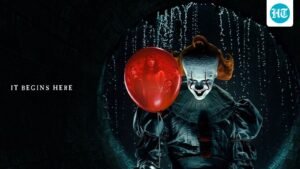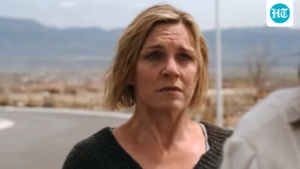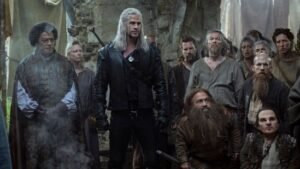
Since its arrival on Netflix, The Witcher has built itself on the intersection of prophecy, politics and personal longing, translating Andrzej Sapkowski’s novels into a fantasy world defined as much by emotional weight as by monsters and magic. The series’ central trio — Geralt, Yennefer and Ciri — has carried the story through shifting alliances and continent-spanning conflict across three seasons. Season 4 marks a significant transition, with Liam Hemsworth replacing Henry Cavill as Geralt of Rivia, alongside returning leads Anya Chalotra and Freya Allan.

The season opens with a retelling of Geralt’s past, recasting his legend for a new generation before grounding us once again in the present. Geralt, still wounded from his confrontation with Vilgefortz, is on the road with Jaskier and the sharp, wary archer Milva. His search for Ciri leads to the formation of an unlikely hanza — a fellowship of warriors, rogues and wanderers who share the journey. Meanwhile, Yennefer, reeling from separation and political instability among the mages, attempts to regroup fractured magical factions in the hopes of resisting Vilgefortz’s growing influence. Meanwhile, Ciri — exhausted by the weight of destiny — tries to outrun her lineage. Renaming herself Falka, she falls in with a band of thieves called the Rats, whose reckless freedom offers her escape, but not absolution.
the good
The narrative structure benefits from restraint. By letting the three arcs unfold independently, the season avoids the timeline confusion that once defined the show. The hanza storyline in particular is vibrant — full of frayed loyalties, roadside dangers and the kind of traveling companionship fantasy storytelling thrives on. New additions like Laurence Fishburne’s quietly enigmatic Regis and Danny Woodburn’s spirited Zoltan slot into the world with ease.
Sharlto Copley’s Leo Bonhart is the standout — a cruel, controlled hunter who treats violence as sport. His scenes dominate every frame he’s in, and the climactic confrontation tied to his arc is easily among the most tightly executed action sequences the series has staged since the Butcher of Blaviken.
The bad
The shift in Geralt’s portrayal is noticeable — not in a transformative sense, but in a comparative one. Hemsworth’s performance carries echoes of Cavill’s — the low register, the tight-jawed stoicism — as though he is tracing the silhouette of a version already set in stone. It is not ineffective, but it does feel studied rather than innate, particularly in quieter emotional beats where Cavill’s restraint once felt instinctive.
Yennefer’s storyline carries potential but often lands unevenly, pulled between political intrigue and magical warfare without fully grounding its motivations. Some battle sequences favor spectacle over coherence, especially the siege at Montecalvo, where logic occasionally bends for effect. A mid-season episode that leans into flashbacks and tonal experimentation may also divide viewers.
The verdict
Season 4 is less a reinvention than a recalibration. The show trims its excesses, strengthens its emotional arcs, and re-centers Geralt, Yennefer and Ciri in ways that feel more focused than the past two seasons. But the transition in Geralt’s portrayal is not seamless — it’s visible, felt, and sometimes distracting in its imitation of what came before. Yet the world-building, new characters and narrative pacing do enough heavy lifting to keep the story compelling.
With one final season remaining, The Witcher stands at a point of reckoning — not just for its characters, but for the series itself. And while this chapter doesn’t fully recapture the spark of its beginning, it marks a steadier path forward than many expected.





